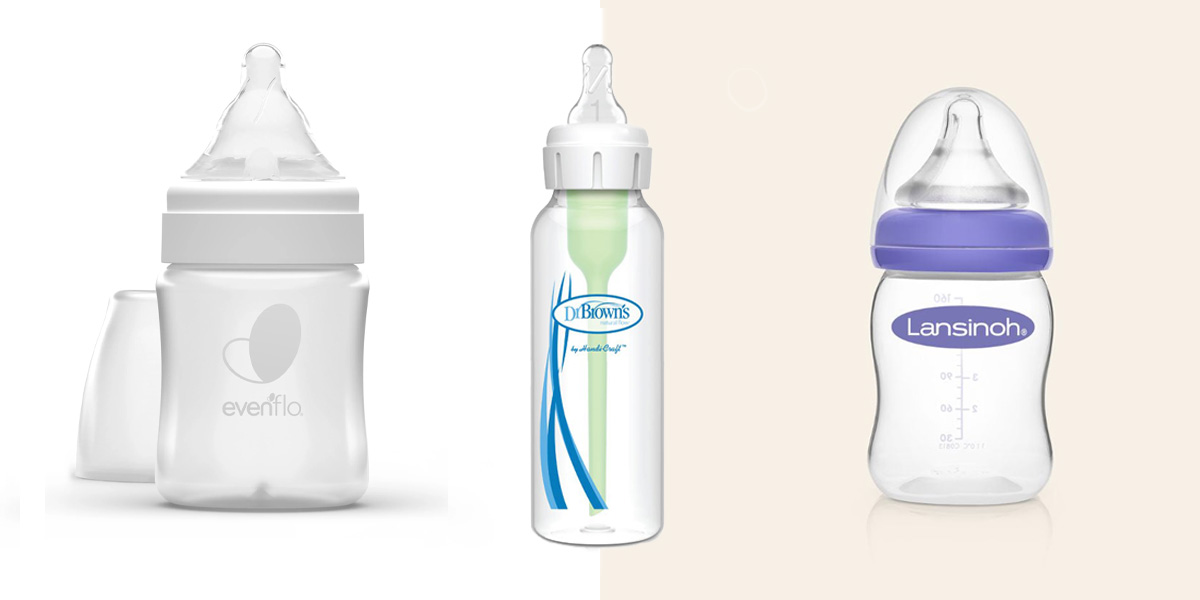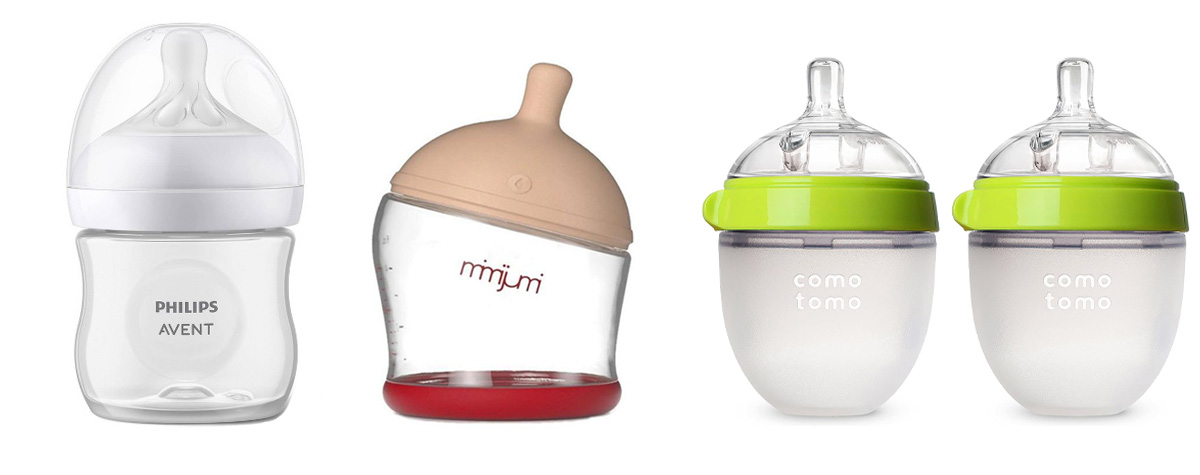Bottle feeding is a great way to add flexibility to your breastfeeding journey. However, as a new or even experienced mom, navigating the realm of bottle feeding can be stressful. Most bottle nipple options fall within two categories:
Category One: Gradual Widening, Narrow tip
Category Two: Non-Gradual Widening, Short tip – often marketed as “breast-like”
When bottle feeding, the goal is to find a nipple shape that will allow your baby to switch from breast to bottle, or vice versa, as seamlessly as possible. You might find that you and your baby are experiencing breast refusal, bottle refusal, or preference between the two, bottle and breast. In this case, you might try one of the more “ideal” nipple shapes in category one. The “ideal” nipple shapes pictured above encourage better mouth placement and even a better latch due to the gradual widening, which is noticed between the base and nipple tip.
1. Design Philosophy: The gradual widening nipple is designed with the baby’s natural feeding process in mind. It starts with a narrow tip, mimicking the mother’s breast, and gradually widens as it extends towards the base.
2. Benefits:
- Natural Latch: The gradual widening nipple encourages a baby to latch on similarly to how they would on the breast, promoting a more natural and comfortable feeding experience.
- Less Air Intake: The design helps reduce air intake during feeding, reducing the risk of colic and gas discomfort.
- Transitioning Ease: Babies who switch between breast and bottle may find it easier to adapt to this shape because of its similarity to the breast.
In contrast, while the nipple shape in the category two row might seem more “breast-like,” they may promote “straw” sucking. “Straw” sucking happens when a baby’s mouth closes only around the tip of the nipple leading to gaps that can form in the corner of the baby’s mouth when feeding. The biggest concerns with this nipple shape are air intake, weak latch, and milk leaking.
1. Air Intake:
While breast-like nipple shapes are designed to mimic the breast, some babies may inadvertently take in more air while feeding with these nipples. This can occur due to the soft and flexible nature of the nipple, which can collapse during feeding if not held at the correct angle or if the baby applies excessive suction.
Increased air intake can lead to issues like colic, gas, and discomfort for the baby.
2. Milk Leaking:
Breast-like nipples may be more prone to milk leaking, especially if they are not positioned correctly in the baby’s mouth. The soft, pliable nature of these nipples can sometimes cause milk to flow too quickly or unevenly, leading to spills and mess during feeding.
Milk leaking can also disrupt the feeding experience and result in wasted breast milk or formula.
Overall, finding what works best for you and your baby is most important. If you find that the “less ideal” nipple shapes work best (without symptoms of air intake, clicking, or leaking), then there is no need to change! The goal is for your baby to seamlessly go back and forth from breast and bottle comfortably. If they are, you don’t need to make any changes. If you are having difficulty or just have questions regarding nipple shapes or bottle feeding in general, reach out to us and we will connect you with an IBCLC to help! Click this link & we will set you up for a visit.



